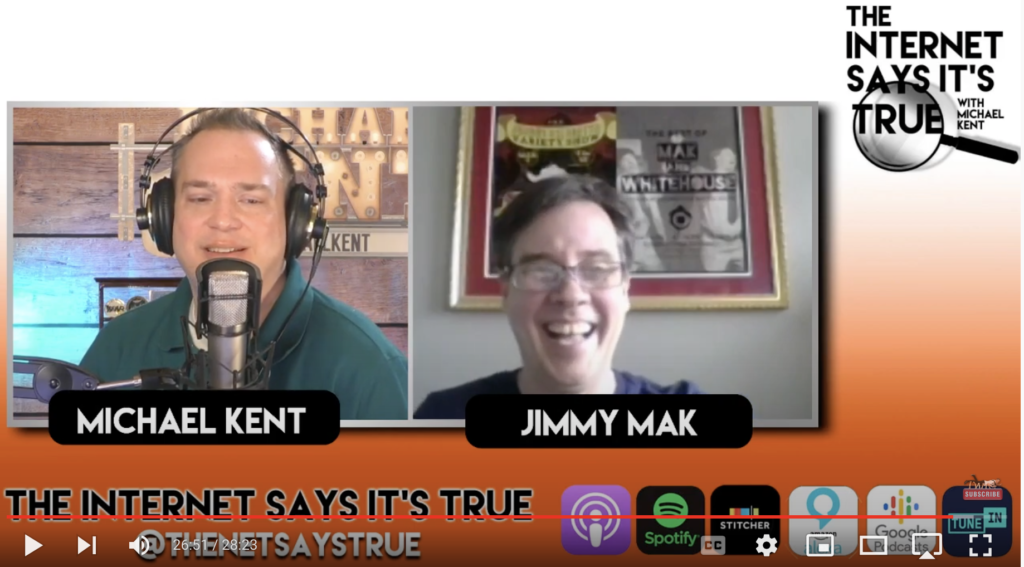The Weirdest Marathon: 1904 Saint Louis Olympics
The Marathon at the 1904 Summer Olympics was SUPER WEIRD. One man was chased off course by wild dogs. One man was intentionally poisoned. Another ate bad fruit and fell asleep. Several were severely dehydrated. The apparent winner was disqualified. And all of this happened because Russia started a war. In this episode, we talk about the 1904 Saint Louis Summer Olympics and then play the quick quiz with Jimmy Mak!
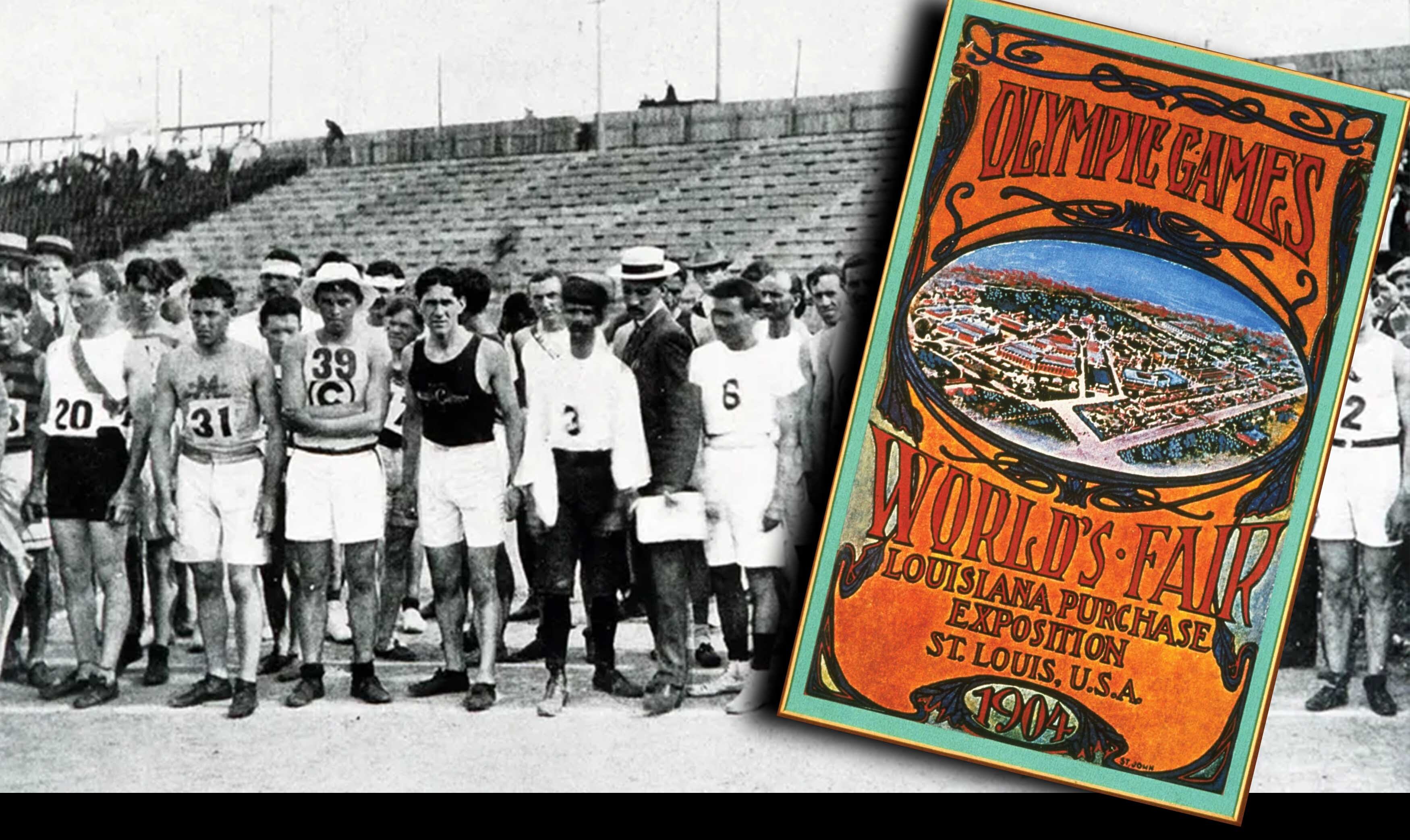
The problems with the 1904 Olympics began with Russia starting a war. Russia was seeking a warm water port in the Pacific Ocean and went to war with Japan in February of 1904. The war was fought in Manchuria, Korea, the Sea of Japan and the Yellow Sea and the Japanese Victory led to unrest in Russia and the Russian Revolution. But as it pertains to our story, it also messed up the Summer Olympics that was slated to happen in America that year.
Because of the war between Russia and Japan, only 12 nations were represented at the games that year, and out of 651 athletes, only 62 of them came from outside North America. Chicago was actually the city that won the bid to host the olympics that year, but there was a conflict because Saint Louis was slated to host the World’s Fair. It was technically being called the “Louisiana Purchase Expedition” and it was a huge event. It’s organizers demanded that both events couldn’t occur simultaneously and compete with one another. The result was that they melded the St. Louis World’s Fair and the Summer Olympics together and held both. Combined, the event lasted from July 1st to November 23rd.
Now this was an early early version of what we call the “modern olympic games.” The ancient olympic games ended around 394 B.C. but the modern olympic games were brought back in the the 19th century. The International Olympic Committee was formed in 1894 and they held their first official version of the Olympics we know today two years later in Athens, Greece. So in 1904, it was only the 3rd version of this new, modern international version of the Olympic Games. And already, it wasn’t looking very…international.
Something interesting about the St. Louis Olympic Games that summer: it was the first time the medals of Gold, Silver, and Bronze were awarded to first, second and third place winners. That’s about the only thing about the 1904 olympics to be proud of. The rest is pretty ugly – including the inclusion of what they called “Anthropology Days.” Starting in the late 1800s, it was common for the world’s fair to include “human zoos,” that would cage and show off African and indigenous men as spectacles – they would call them “Savages” and people would gather around to oggle them and discuss European civilization and progress. It was pretty disgusting. And in the 1904 Olympics, Anthropology Days gathered 100 indigenous men who were showcased as they competed in feats like greased pole climbing, mud slinging and ethnic dancing. While the white crowds of onlookers “oohed” and “aahed.”
The most talked-about thing in the games that year, however, was the 24.85 mile marathon. It was the flagship event of the games and was meant to be the event that tied the modern games to its ancient roots. Two of the men from the Anthropology Days competed. They were men from the Tsuana Tribe of South Africa and ran barefoot. One man, Frank Pierce, was from the Seneca Nation. Five of the runners were accomplished American marathon runners who had competed in the Boston Marathon. Another man – Fred Lorz – had won a chance to race because he placed in a local 5 mile race. Ten men from Greece ran. They had never participated in a marathon before. One man from Cuba, Felix Carvajal, had entered in the race after raising money to come to America. When he arrived in America, he lost all his money gambling in New Orleans. He walked and hitchhiked to St. Louis. Altogether, the field of marathon runners was a strange bunch and the course was even stranger. It wasn’t along paved roads like today’s races. Some places on the course were covered in dust, several inches thick. There were seven huge hills, from 100 to 300 feet tall. Some parts of the race were covered in loose stone and cracked roadways. And throughout the entire 24.85 miles, the men would have to dodge onlookers, trains, delivery vehicles and wagon traffic.
So by the time the marathon began in the 1904 Summer Olympics, it was 3pm. Normally these types of events start in the early morning to help protect the runners from the heat. But part of the planners’ idea was for this marathon was to be an endurance test. It was 90 degrees outside. The race began with 5 laps around the stadium track and then took off into the country side. 32 men started the race, but only 14 men would end up finishing.
The chief organizer of the games was James Sullivan and this monster had the idea that he would use this marathon as a test of fluid intake and purposeful dehydration. He made sure there were only two opportunities for water on the almost 25 mile run. One was a water tower and one was a small roadside well.
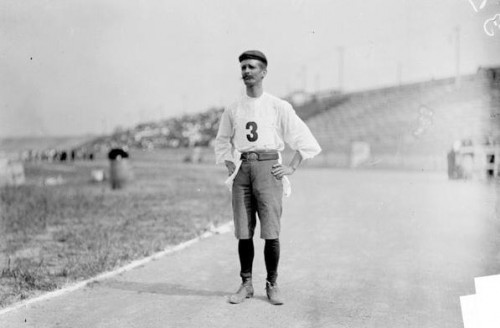
After the first 19 miles, William Garcia stopped running and fell to the side of the road where he began coughing up blood. The dust from the roads and from the cars following the race coated his esophagus and ripped the lining of his stomach. He nearly died. John Lordon became dehydrated and started vomiting. Felix Carvajal, the runner from Cuba who had walked and hitchhiked his way from the port of New Orleans, suffered from severe stomach cramps and laid down on the side of the road to take a nap. He wasn’t suffering from dehydration, though. He had been picking and eating fruit from trees along his run. Some of the apples he picked had been rotten. This put Sam Mellor in the lead. Mellor was an experienced marathon runner and had won several notable marathons in the past. But he too became dehydrated and dropped out of the race because of stomach cramps.
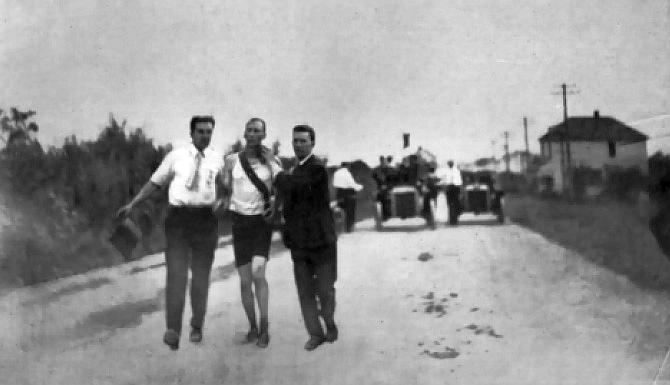
A man named Len Tau, one of the South African runners, was chased off of the course by a pack of wild dogs.
And then there was Thomas Hicks. Hicks was also a very experienced marathon runner. He was doing well in the race, and was supported by two men who were traveling along with him in a car. They would occasionally get out of the car to run along with him and help him. He begged them for water, but they refused. They sponged his mouth with warm distilled water, but for whatever reason wouldn’t give him water. What they would give him – and this is disgusting – was a helping of egg whites laced with strychnine. They weren’t trying to poison Thomas Hicks. Apparently a small amount of strychnine was thought to be a stimulant. Hicks knew they also had a flask of brandy and he begged for it, but they held it back from him. While he was still running, another runner finished the race.
It was the one man who did really well throughout the race by the name of Fred Lorz. He was the amateur marathon runner, having only competed in a local 5 miler. He was suffering from stomach cramping, but apparently pushed through the cramps to finish the race. I say apparently because as soon as he crossed the finish line, onlookers started shouting. As Lorz was getting his photo taken with Alice Roosevelt, daughter of President Teddy Roosevelt, the crowd was booing and shouting that he was an imposter. They had seen what others hadn’t. See, when he began cramping, Fred Lorz jumped into his support team’s follow car and completed as many as 11 miles of the race riding in the car before jumping out to run the last leg on his own. He was immediately disqualified. Some reports say that he was disqualified from future olympics, but it didn’t end his marathon career. In fact, you should google who won the Boston Marathon the following year, in 1905.
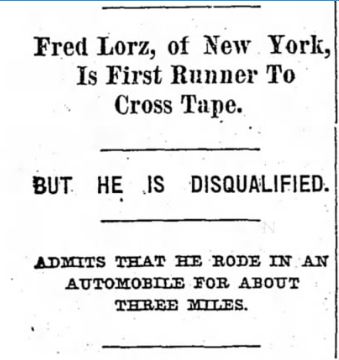
The word of Lorz’s disqualification got to Thomas Hicks, he was in second place and barely able to move his legs on his own. Two of his support team were helping him, holding him up as he barely made contact with his legs to the road. They gave him another helping of strychnine-laced eggs. Then they gave him some brandy. He was hallucinating, and begging them for something to eat, something to drink. He begged them to let him lie down, but they continued holding him up. 15 minutes after Fred Lorz was disqualified, the three men crossed the finish line – Thomas Hicks and his two handlers. He was declared the official winner of the 1904 Summer Olympics marathon. Doctors treated him for poisoning and he wasn’t able to walk out of the stadium for over an hour.
It was the worst ratio of beginners to finishers in marathon history. It was also the slowest winning marathon time in Olympic History – three hours and twenty eight minutes. The marathon was just one of many horrible parts of this barely notable combination of Olympics and World’s Fair. And it all got messed up because Russia started a war.
Review this podcast at https://podcasts.apple.com/us/podcast/the-internet-says-it-s-true/id1530853589
Bonus episodes and content available at http://Patreon.com/MichaelKent
For a special discount at SCOTTeVEST, or FATCO skincare, visit http://theinternetsaysitstrue.com/deals
Sources for this episode:
https://www.smithsonianmag.com/history/the-1904-olympic-marathon-may-have-been-the-strangest-ever-14910747/
https://en.wikipedia.org/wiki/Athletics_at_the_1904_Summer_Olympics_–_Men%27s_marathon
https://www.runnersworld.com/runners-stories/a37039437/1904-olympic-marathon/
https://olympics.com/en/news/st-louis-marathon-the-strangest-race-in-olympic-history
https://apnews.com/article/chicago-st-louis-sports-general-2020-tokyo-olympics-olympic-games-e2f98a9b55f7ec212b037018d847ec32

